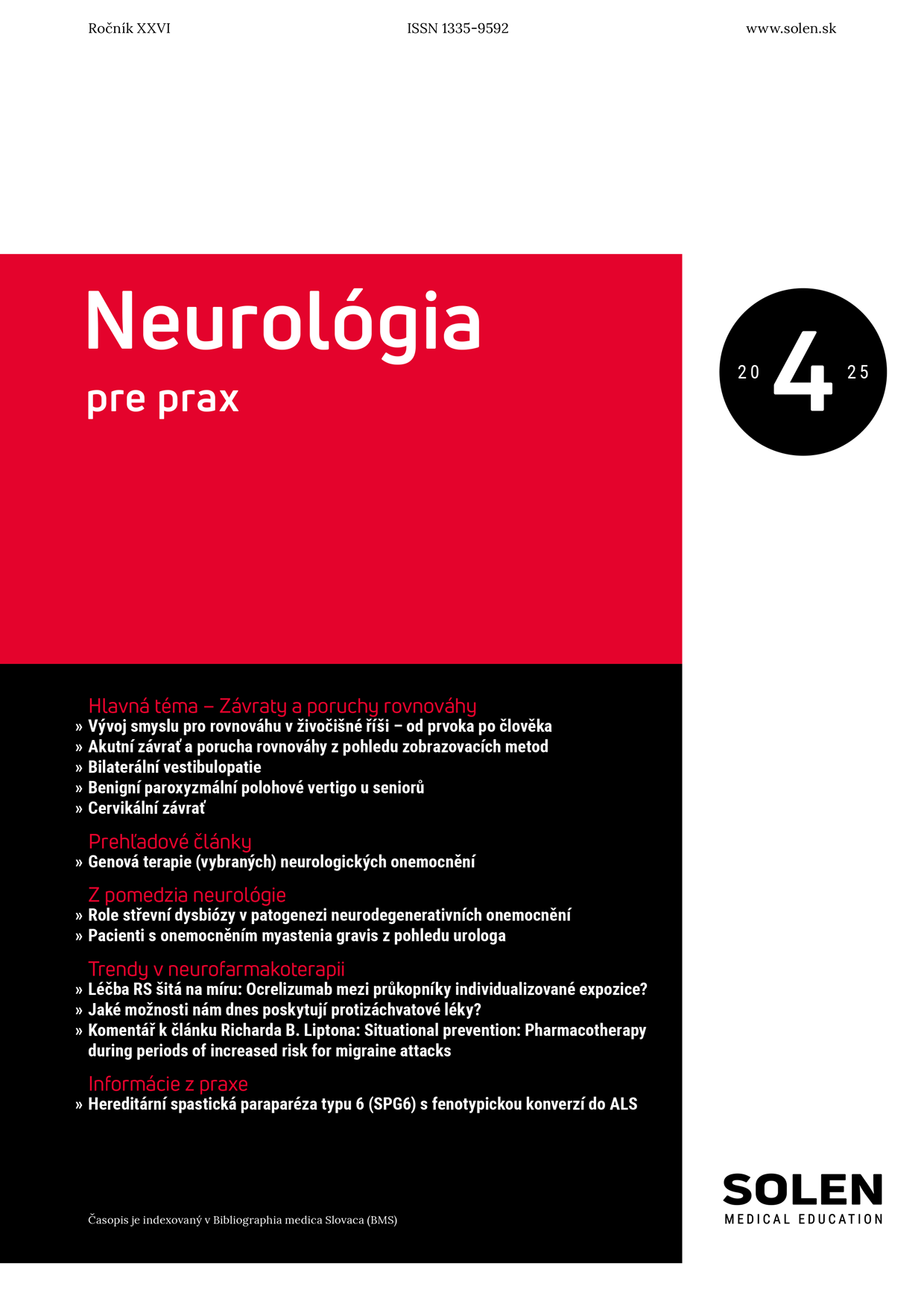Psychiatria pre prax 2/2001
Diagnóza Alzheimerovy nemoci pomocí škálovacích metod
Alzheimerova nemoc je progresivní neurodegenerativní onemocnění s dominujícími mnestickými a intelektovými poruchami a s výrazným úpadkem osobnosti. Již v lehčích stadiích Alzheimerovy nemoci mají pacienti atrofii struktur v mediálním temporálním laloku, ale nejvýraznější atrofie je nalézána v amygdale a hippokampu. V roce 1957 bylo poprvé publikováno, že po oboustranném narušení struktury hippokampu dochází k narušení explicitní paměti. Existují studie, které demonstrují, že opakované hodnocení kognitivních funkcí může poskytnout užitečné informace o reakci kognitivních funkcí pacientů s Alzheimerovou nemocí na farmakoterapii. Tato práce nabízí shrnující pohled na rozdělení paměti spolu s jejími anatomickými koreláty spolu s apelem na užívání jednotných škál k hodnocení postižení paměti a dalších kognitivních funkcí u pacientů s kognitivním postižením. Jak vyplývá z teoretické části o neurofyziologii paměti, paměť se dělí na mnoho skupin a my můžeme její jednotlivé složky vyšetřovat do různé míry různými testy. Ve studiích velmi často jejich autoři uvádějí nutnost dalšího srovnávání škál na větších vzorcích pacientů. I proto se autorovi jeví jako podstatné sjednotit používání škál a potvrdit jejich užívání jako standardní. Základem by mohl být Mini Mental State Examination (MMSE) doplněný testem kreslení hodin, dále Hachinského ischemický skór a tyto testy by mohly být dále doplněny jedním z testů na diferencování od deprese, jedním z testů na diferencování mírné kognitivní poruchy a jedním z testů na posouzení soběstačnosti pacienta. Pokud by byli pacienti systematicky hodnoceni škálami, pak by to výrazně pomohlo objektivizovat dosavadní průběh, odpověď na léčbu i prognózu rychlosti progrese onemocnění na základě faktických údajů, které se při vynechání škálování vytrácejí z dokumentace o předávaném pacientovi, takže nový lékař začíná prakticky „od nuly“, ačkoli o nemoci se ví již několik let.
Kľúčové slová: Alzheimerova nemoc, demence, explicitní a implicitní paměť, hippokampus, hodnotící škály.
The diagnosis of Alzheimer’s disease using scale-rating methods
Alzheimer’s disease is a progressive neurodegenerative disorder with dominant memory and intellect disturbances and a significant decline of personality. Already in the early phases of the disease, the patient undergoes atrophy of the structures of the medial temporal lobe, however the most significant atrophy is found in the amygdales and the hippocampus. For the first time in 1957, results were published showing that a disturbance of explicit memory occurs after bilateral damage of the structure of the hippocampus. There are studies showing that the repeated evaluation of the cognitive functions may provide useful information on the pharmacotherapeutic response of the cognitive functions of patients with Alzheimer’s disease. This paper offers a comprehensive look at the division of memory and its anatomical correlates; furthermore we call for the use of unified scales in evaluating the impairment of memory and other cognitive functions of patients with cognitive impairment. As is implied in the paper’s theoretical part on the neurophysiology of memory, memory is divided into several groups, and we can investigate its individual parts to various extents by using a variety of tests. Studies on that subject very often state the need for further comparison between scales and for working on a larger sample of patients. For that reason as well, the author believes it essential to unite the use of the various scales and to confirm their use in a standard. The Mini Mental State Examination could serve as a basis, supplemented by the clock drawing test, by the Hachinski ischaemic index, and those tests may be further supplemented by one of the tests for differentiation from depression, one of the tests for differentiation from slight cognitive impairment and one of the tests for the appraisal of the patient’s self-sufficiency. The systematic scale-based evaluation of the patients would significantly help to provide objective factually-based information on previous therapy development and response, as well as on the prognosis of the speed of progression of the disease; when scale-rating is not used, on the contrary, these factual data are left out from the documentation on a referred patient, so that the new physician begins practically “from scratch”, even though the disease may have already been detected years before.
Keywords: Alzheimer’s disease, dementia, explicit and implicit memory, hippocampus, rating scales.

















